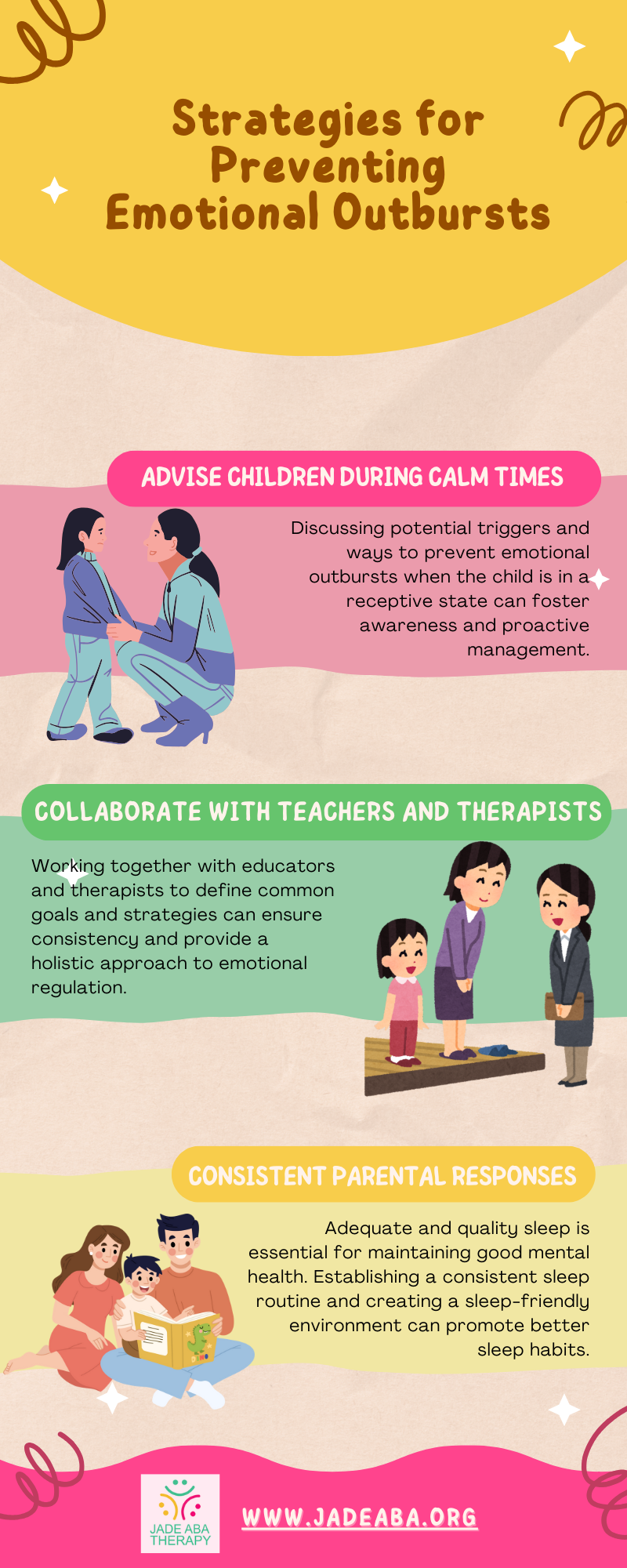Emotional regulation can present unique challenges for individuals with autism. Autistic children often struggle with emotional regulation due to difficulties in sensory integration, communication deficits, and difficulty understanding social cues. These challenges can make it hard for them to regulate and express their emotions appropriately.
However, it is important to note that emotional regulation is a skill that can be taught and developed.
Autistic children, both high-functioning and low-functioning, may experience difficulties in regulating their emotions. The challenges they face are often related to social, communication, and executive functioning skills, as well as coping with sensory dysfunction and anxiety.
These factors can make it challenging for them to maintain a calm state and regulate their emotions effectively. As a result, they may experience emotional outbursts that can be surprising or shocking to those around them.
To help with that, we have prepared some effective tips from experts to help with emotional regulation.

Importance of Emotional Regulation
Before we start, let’s first look at the importance of emotional regulation.
Emotional regulation plays a crucial role in the well-being and overall development of individuals with autism. Teaching autistic children how to regulate their emotions can have a positive impact on their daily lives and interactions. By learning to understand and manage their feelings, autistic individuals can navigate social situations more effectively and develop healthier coping mechanisms.
Effective emotional regulation strategies can help autistic children in various ways. They can learn to recognize their emotions, understand that feelings are temporary and will pass, and develop techniques to calm themselves during emotional upsets.
By providing strategies for self-comfort and offering ways to prevent emotional outbursts, caregivers and educators can contribute to better emotional regulation outcomes for autistic children.
It is important to approach the topic of emotional regulation with autistic children during calm times. Reminding them of strategies to prevent emotional outbursts, such as deep breathing exercises or engaging in comforting activities, can be beneficial.
Working collaboratively with teachers and therapists to find effective calming techniques tailored to the child’s specific needs can also contribute to improved emotional regulation.

Strategies for Emotional Regulation
Implementing effective strategies for emotional regulation among autistic individuals is crucial. Autistic children often face challenges in regulating their emotions due to difficulties in sensory integration, communication deficits, and understanding social cues.
However, with the right techniques and support, emotional regulation can be taught and developed. Here are some effective strategies to consider:
Teach Self-Calming Techniques
One effective approach to emotional regulation is teaching autistic children self-calming techniques. These techniques empower individuals to take control of their emotions and maintain a state of calm.
Here are some self-calming techniques that can be beneficial:
- Deep breathing exercises – Encouraging slow and deep breaths can help autistic children relax and reduce feelings of anxiety or frustration.
- Positive thinking strategies – Promoting positive self-talk and helping children reframe negative thoughts can aid in shifting their mindset and managing their emotions.
- Problem-solving approaches – Teaching children problem-solving skills can assist them in identifying solutions to challenging situations, reducing emotional distress.
Provide Comfort Strategies
Providing comfort strategies can also contribute to effective emotional regulation for individuals with autism. These strategies offer a sense of security and reassurance during times of emotional distress.
You might want to consider the following comfort strategies:
- Reminding children that feelings are temporary – Helping them understand that emotions come and go can provide comfort and perspective during intense emotional experiences.
- Sensory-based calming techniques – Identifying and addressing sensory challenges specific to each individual can help create a soothing environment and prevent emotional overwhelm.
- Establishing a calm-down corner or toolbox – Creating a dedicated space with tools and visual prompts can serve as a safe haven for individuals to regulate their emotions and seek comfort when needed.
Prevent Emotional Outbursts
Prevention is an important aspect of emotional regulation for individuals with autism. By understanding triggers and implementing strategies to prevent emotional outbursts, caregivers can help create a more stable emotional environment.
To help with that, here are some preventive strategies to consider:

By implementing these strategies, parents and caregivers can assist individuals with autism in developing emotional regulation skills. Remember that each person is unique, so it may be necessary to tailor these strategies to meet individual needs.
With patience, support, and effective techniques, individuals with autism can enhance their emotional regulation abilities, leading to improved overall well-being.
Promoting Self-Regulation
Promoting self-regulation is an essential goal for individuals with autism. Self-regulation consists of a set of skills and techniques that can help individuals, particularly children with autism, stay in control of their emotions and behaviors by consciously controlling thoughts, feelings, and behaviors.
Teaching young children with autism to self-regulate emotions involves adults in the child’s environment staying calm, modeling, prompting, and reinforcing self-regulatory strategies, directly teaching emotions using visual aids, simplifying language during times of dysregulation, and using visual supports to aid the transition from co-regulation to self-regulation.
Co-Regulation vs. Self-Regulation
Co-regulation, which involves the child relying on adults in their environment for emotional support and guidance, plays a crucial role in the development of self-regulation.
Young children learn to self-regulate emotions through co-regulation with adults. During co-regulation, adults can model and prompt skills to help the child gain control when becoming dysregulated.
As children develop and mature, they gradually transition from relying on external support to independently managing their emotions and behaviors, leading to self-regulation.
Teaching Emotions and Simplifying Language
Directly teaching emotions can be a beneficial strategy for promoting self-regulation in children with autism. Identifying and understanding emotions can be a challenging skill for individuals on the autism spectrum.
The use of visual aids, such as flashcards with line drawings or clipart pictures of emotions, can help children learn to recognize and label different emotions.
Additionally, making faces depicting emotions and pointing out real-life situations can further enhance their understanding.
Simplifying language during times of dysregulation is also crucial in promoting self-regulation. Stressed and dysregulated children often find it harder to access their “thinking” skills. To aid co-regulation and eventually transition to self-regulation, it is important to reduce the number of directions given and speak in a calmer, quieter tone during these challenging times.
By simplifying language, you can help children better comprehend and respond to instructions, allowing them to regain control of their emotions more effectively.
Visual supports also play a significant role in helping children with autism move from co-regulation to self-regulation of emotions. Visual cues and aids can assist children in accessing self-regulatory strategies automatically during periods of dysregulation.
For example, using visual supports to teach and encourage deep breathing or calming sequences during regulated calm states can help children develop the skills needed to manage their emotions independently.

Practical Techniques for Emotional Regulation
Helping individuals with autism develop effective strategies for emotional regulation is essential for their well-being and overall quality of life. By teaching practical techniques, caregivers and parents can empower autistic individuals to navigate their emotions in a healthy and controlled manner.
Here are three techniques that have proven to be beneficial:
Deep Breathing Exercises
Deep breathing exercises can be a powerful tool in promoting emotional regulation. Encouraging autistic individuals to take slow, deep breaths during moments of heightened emotions can help them regain control and calm their minds. This technique allows for increased oxygen intake, which can alleviate stress and anxiety.
Here’s how to do such exercises:
- Find a quiet and comfortable space.
- Instruct the individual to take a slow breath in through their nose, counting to four.
- Have them hold their breath for a moment.
- Exhale slowly through the mouth, counting to four.
- Repeat this process several times until the individual feels more relaxed.

Positive Thinking Strategies
Promoting positive thinking can help individuals with autism shift their focus away from negative emotions and redirect their thoughts towards more positive ones.
Encouraging them to reframe negative situations and find silver linings can contribute to emotional regulation.
Problem-Solving Approaches
Teaching individuals with autism problem-solving skills equips them with the ability to address and manage challenging situations. By breaking down problems into smaller parts and brainstorming potential solutions, they can feel more empowered and in control of their emotions.
It can be achieved through the following steps:
- Define the problem or situation that is causing distress.
- Encourage the individual to brainstorm possible solutions.
- Evaluate the pros and cons of each solution.
- Help them select the most effective solution.
- Support them in implementing the chosen solution and evaluate the outcome.
By incorporating these practical techniques into daily routines and providing consistent support, individuals with autism can develop valuable skills for emotional regulation. It is important to customize these techniques based on the individual’s specific needs and preferences, as everyone’s journey toward emotional regulation is unique.
Sources:
https://www.autismparentingmagazine.com/help-child-with-emotional-regulation
https://luxai.com/blog/emotional-regulation-calm-down-activities-for-autistic-children
https://autismlittlelearners.com/self-regulation-of-emotions
https://www.verywellhealth.com/helping-children-with-autism-handle-emotions-260146